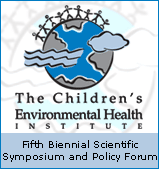| Increased Mortality from Lung Cancer and Bronchiectasis in Young Adults after Exposure to Arsenic in Utero and in Early Childhood Allan H. Smith,1 Guillermo Marshall,2 Yan Yuan,1 Catterina Ferreccio,2 Jane Liaw,1 Ondine von Ehrenstein,1 Craig Steinmaus,1,3 Michael N. Bates,4 and Steve Selvin4 1Arsenic Health Effects Research Program, University of California, Berkeley, California, USA; 2Pontificia Universidad Católica de Chile, Santiago, Chile; 3Office of Environmental Health Hazard Assessment, California Environmental Protection Agency, Oakland,California, USA; 4School of Public Health, University of California, Berkeley, California, USA Abstract
Arsenic in drinking water is an established cause of lung cancer, and preliminary evidence suggests that ingested arsenic may also cause nonmalignant lung disease. Antofagasta is the second largest city in Chile and had a distinct period of very high arsenic exposure that began in 1958 and lasted until 1971, when an arsenic removal plant was installed. This unique exposure scenario provides a rare opportunity to investigate the long-term mortality impact of early-life arsenic exposure. In this study, we compared mortality rates in Antofagasta in the period 1989–2000 with those of the rest of Chile, focusing on subjects who were born during or just before the peak exposure period and who were 30–49 years of age at the time of death. For the birth cohort born just before the high-exposure period (1950–1957) and exposed in early childhood, the standardized mortality ratio (SMR) for lung cancer was 7.0 [95% confidence interval (CI) , 5.4–8.9 ; p < 0.001] and the SMR for bronchiectasis was 12.4 (95% CI, 3.3–31.7 ; p < 0.001) . For those born during the high-exposure period (1958–1970) with probable exposure in utero and early childhood, the corresponding SMRs were 6.1 (95% CI, 3.5–9.9 ; p < 0.001) for lung cancer and 46.2 (95% CI, 21.1–87.7 ; p < 0.001) for bronchiectasis. These findings suggest that exposure to arsenic in drinking water during early childhood or in utero has pronounced pulmonary effects, greatly increasing subsequent mortality in young adults from both malignant and nonmalignant lung disease. Key words: arsenic, bronchiectasis, childhood exposure, chronic obstructive pulmonary disease, drinking water, in utero exposure. Environ Health Perspect 114: 1293–1296 (2006) . doi:10.1289/ehp.8832 available via http://dx.doi.org/ [Online 27 March 2006]
Address correspondence to A.H. Smith, School of Public Health, 140 Warren Hall, University of California, Berkeley, CA 94720-7360 USA. Telephone: (510) 843-1736. Fax: (510) 843-5539. E-mail: ahsmith@berkeley.edu This research was supported by the National Institute of Environmental Health Sciences grants R01 ES10033-03 and P42-ES04705 and by the University of California Center for Occupational and Environmental Health. The authors declare they have no competing financial interests. Received 9 November 2005 ; accepted 23 March 2006.
The full version of this article is available for free in HTML or PDF formats. |

